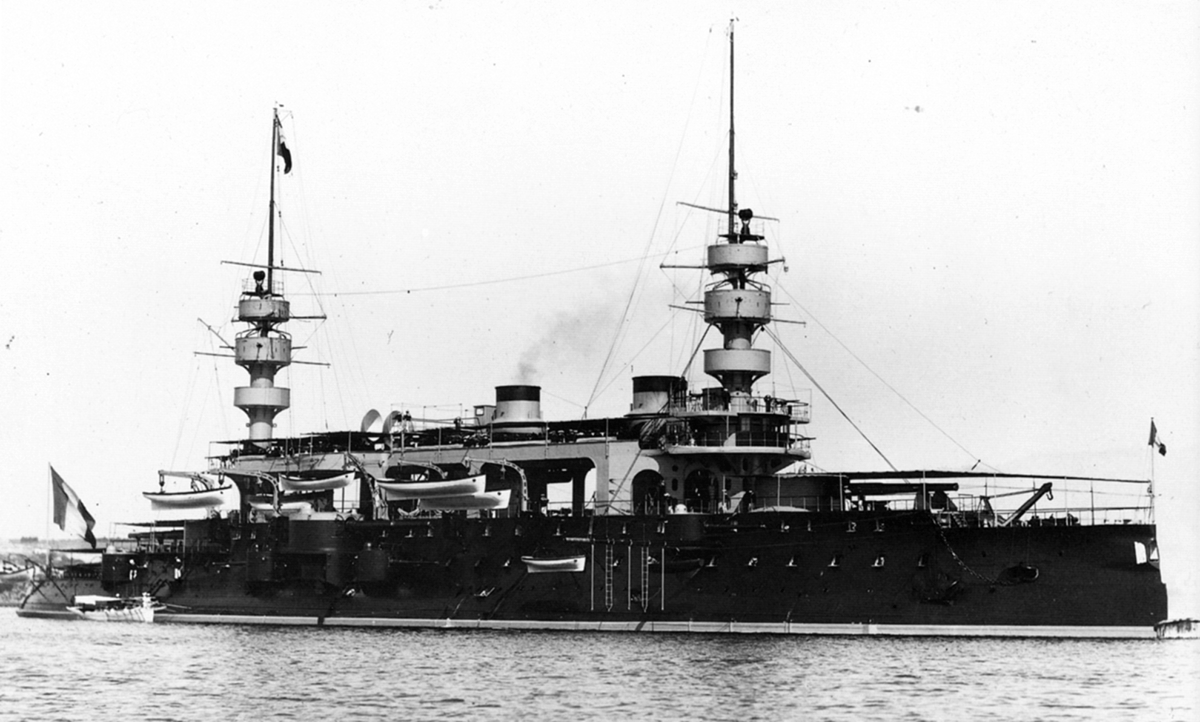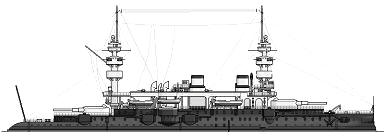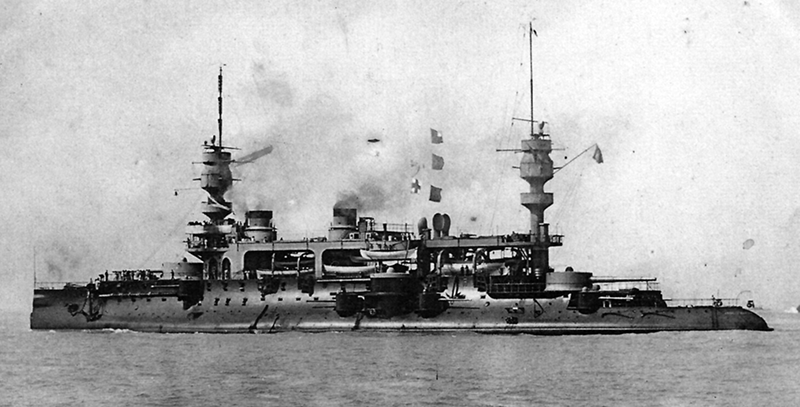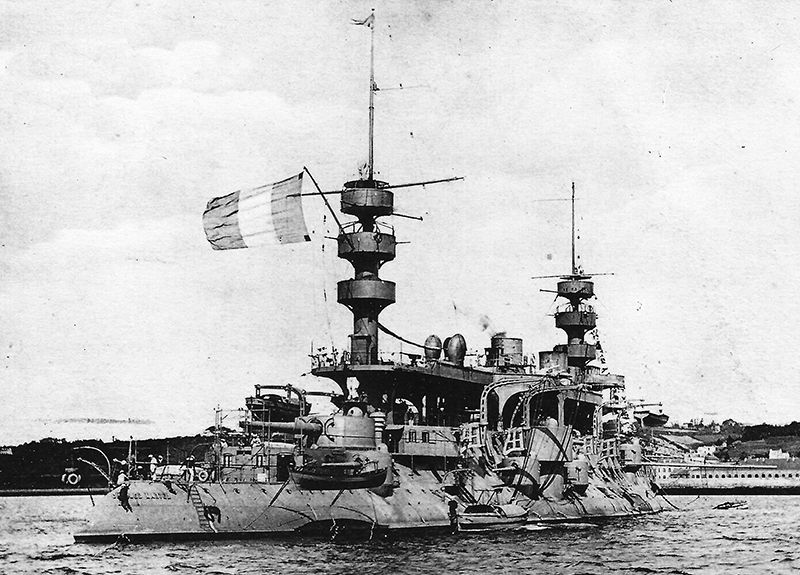
NAVYPEDIA
 Support the project with paypal
Support the project with paypal
Photo

Charles Martel as built
Ships
| Name | No | Yard No | Builder | Laid down | Launched | Comp | Fate |
|---|---|---|---|---|---|---|---|
| Charles Martel | Arsenal de Brest | 4.1891 | 29.8.1893 | 6.1897 | stricken 10.1919 |
Technical data
| Displacement normal, t | 11693 |
|---|---|
| Displacement full, t | |
| Length, m | 115.5 pp 119.0 oa |
| Breadth, m | 21.6 |
| Draught, m | 8.38 |
| No of shafts | 2 |
| Machinery | 2 VTE, 24 Lagrafel d`Allest boilers |
| Power, h. p. | 14900 |
| Max speed, kts | 18 |
| Fuel, t | coal 980 |
| Endurance, nm(kts) | 4400(10) |
| Armour, mm | Nickel steel; belt: 450 - 250, upper belt: 100, main turrets: up to 380, turret bases: up to 150, secondary turrets: 100, CT: 230, deck: 70 |
| Armament | 2 x 1 - 305/45 M1887, 2 x 1 - 274/45 M1887, 8 x 1 - 139/45 M1887, 4 x 1 - 65/50 M1891, 12 x 1 - 47/40 M1885, 8 x 5 - 37/20 M1885, 4 - 450 TT (beam, 2 aw, 2 sub) |
| Complement | 644 |
Standard scale images

Charles Martel 1914 drawing from www.shipbucket.com
Graphics
Project history
The first to be laid down of five similar ships but with sufficient differences to prevent them being considered as one class. The Charles Martel had a forecastle deck giving a high freeboard forward but was cut down to the main deck at the stern and could be distinguished by a flying deck between the two military masts. The 305mm centre pivot turrets were fore and aft at forecastle and upper deck level, with the 274mm on either beam rising from the tumblehome to upper deck level. The 139mm were in single turrets, two by the foremast at upper deck level, and the rest at main deck level, four being by the 274mm and two by the after 305mm. Metacentric height is given as 1.0m but British reports state that stability was inadequate.
Ship protection
Complete main belt was 2.3m high (underwater part was 1.8m). Its thickness was 450mm amidships at the upper edge tapering to 250mm at the lower edge. These digits were 300 and 250mm at ship ends. Complete 100mm upper belt had 3.0m height fwd, 1.2m amidships and 2.0m aft. Arched armour deck was connected with upper edge of main belt and sloped down at the bows. Its maximal strength was 70mm on 10mm plating. Second deck (with up to 25mm thickness) laid 0.8m under main deck, space between these decks was divided into many small compartments, filled with coal or stores, formed the tranche cellulaire or cellular layer much favoured by advocates of French designs.
Modernizations
early 1900s: - 2 - 450 TT (aw); + 4 x 1 - 47/40 M1885.
Naval service
No significant events.
 HOME
HOME FIGHTING SHIPS OF THE WORLD
FIGHTING SHIPS OF THE WORLD FRANCE
FRANCE CHARLES MARTEL battleship (1897)
CHARLES MARTEL battleship (1897)


